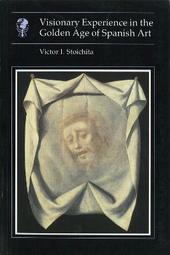
|
Visionary Experience in the Golden Age of Spanish Art
Paperback / softback
Main Details
| Title |
Visionary Experience in the Golden Age of Spanish Art
|
| Authors and Contributors |
By (author) Victor I Stoichita
|
| Physical Properties |
| Format:Paperback / softback | | Pages:224 |
|
| Category/Genre | Theory of art |
|---|
| ISBN/Barcode |
9780948462757
|
| Classifications | Dewey:709.46 |
|---|
| Audience | | General | | Professional & Vocational | |
|---|
| Illustrations |
102 black & white illustrations
|
|
Publishing Details |
| Publisher |
Reaktion Books
|
| Imprint |
Reaktion Books
|
| Publication Date |
1 October 1995 |
| Publication Country |
United Kingdom
|
Description
In this account of how Spanish painters of the 16th and 17th centuries dealt with mystic visions in their art, and of how they attempted to "represent the unrepresentable", Victor Stoichita aims to establish a theory of visionary imagery in Western art in general, and one for the Spanish Counter-Reformation in particular. He describes how the spirituality of the Counter-Reformation was characterized by a rediscovery of the role of the imagination in the exercise of faith. This had important consequences for painters such as Velasquez, Zurbaran and El Greco, leading to the development of ingenious solutions for visual depictions of mystical experience. This was to crystallize into an overtly meditative and didactic pictorial language.
Author Biography
Victor I. Stoichita is Professor of the History of Art at the University of Fribourg, Switzerland. He is author of A Short History of the Shadow (Reaktion, 1997) and co-author with Anna-Maria Coderch of Goya: The Last Carnival (Reaktion, 1999).
ReviewsReaktion Books have a nice line in curious art history. The topic here is delightful: the relationship between painting and supernatural visions. This is the far side of Counter-Reformation piety with such subjects as the Mystical Lactation of St Bernard. The Guardian ... a well-documented, scholarly survey Burlington Magazine ... thought-provoking ... the depiction of visionary experiences was a powerful subject for Counter-Reformation devotion, manifested especially in Spanish Baroque art. Stoichita explores aspects of both form and meaning in Spanish paintings of visions (such as the role of trompe l'oeil, the manipulation of foreshortenings, and even variations in paint strokes), along with analyzing appropriate contemporary writings. Choice
|